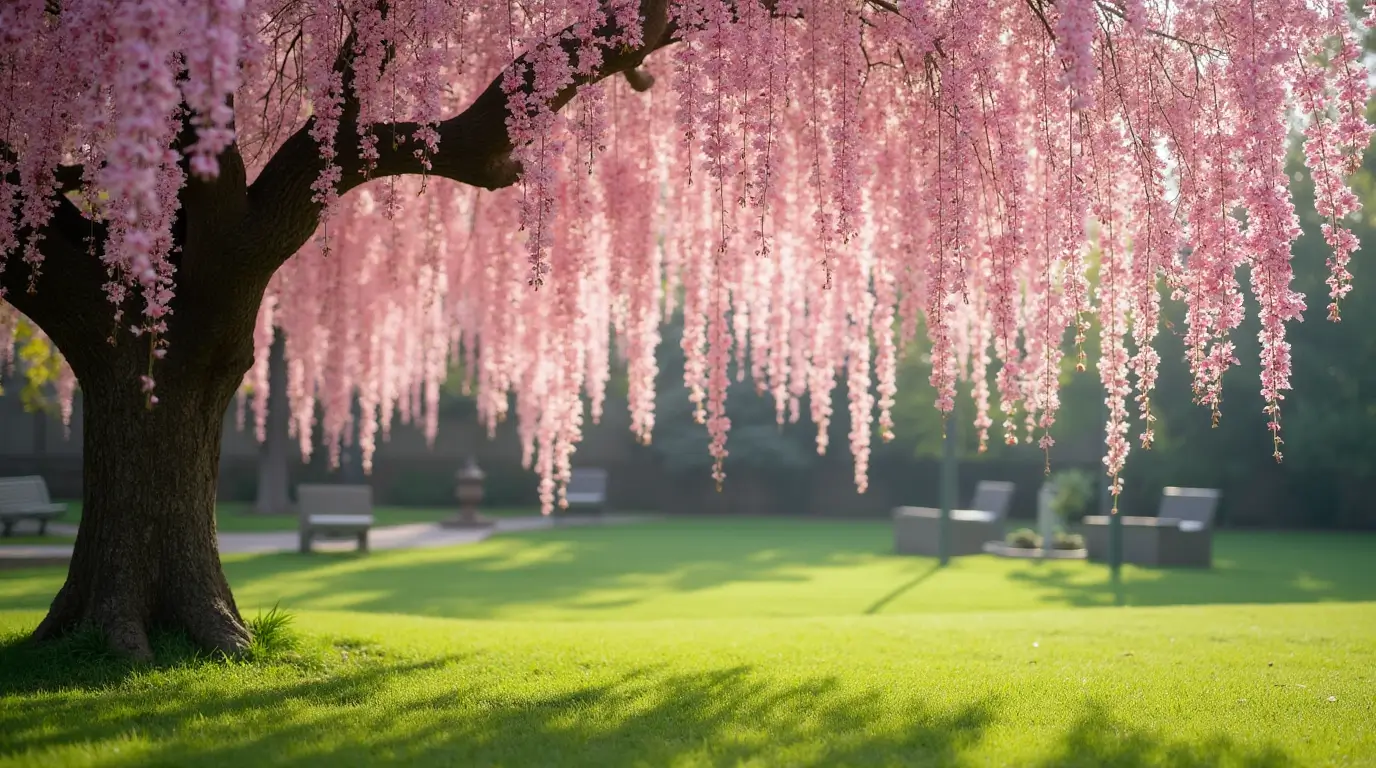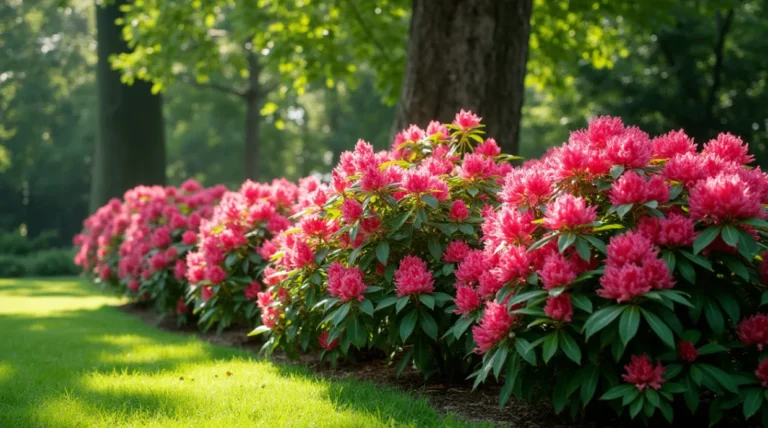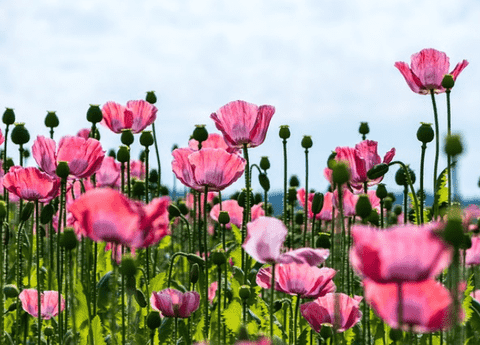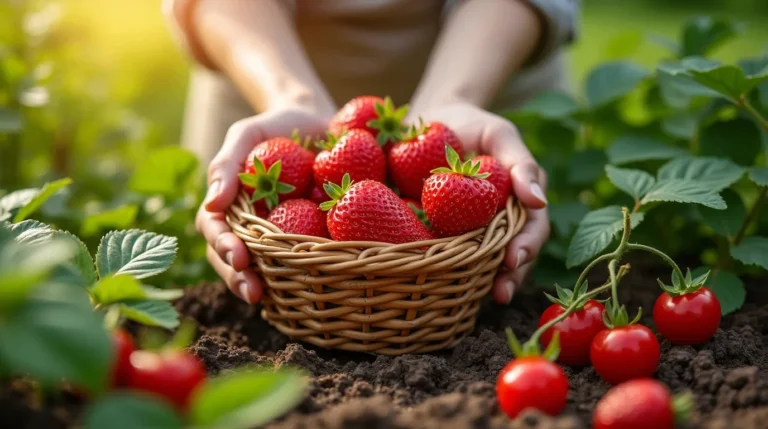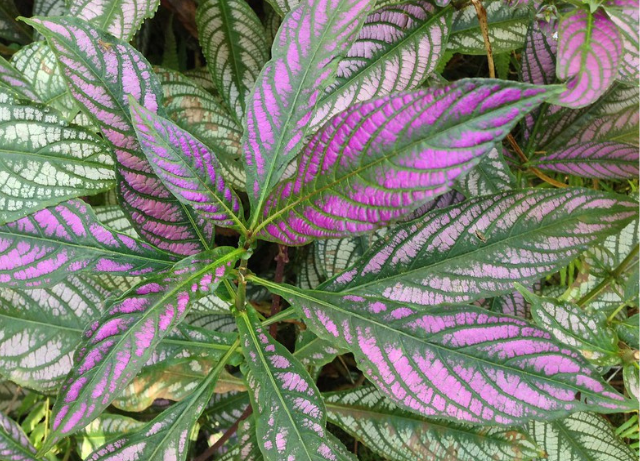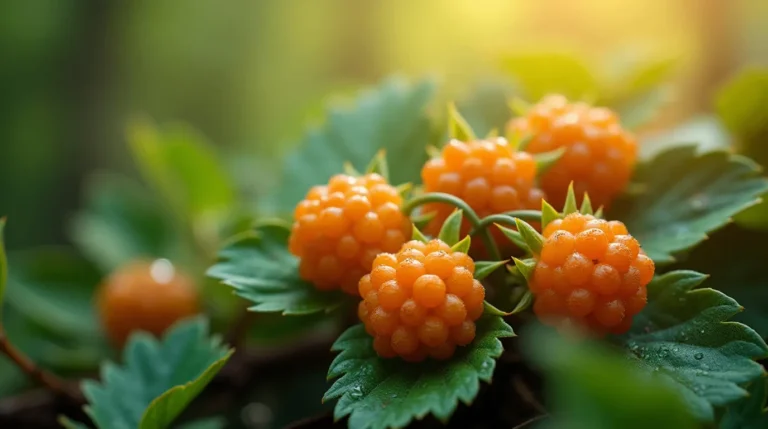Weeping Cherry Tree Care Guide: How To Grow It Beautifully
The weeping cherry tree is a stunning ornamental tree known for its cascading branches and beautiful spring blossoms, creating a dramatic focal point in any landscape.
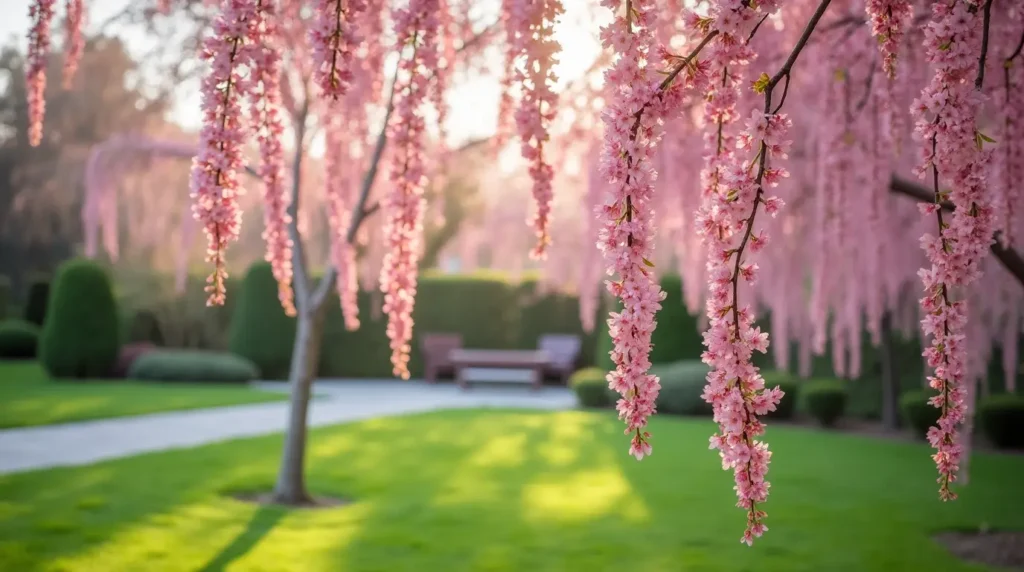
These graceful trees require proper care to maintain their health and beauty. Understanding the specific needs of cherry trees, including soil requirements and watering schedules, is essential for their longevity.
With proper care, a weeping cherry can thrive in your garden for decades, providing seasonal color changes and beauty. The Prunus genus includes several varieties of weeping cherries, offering options for different garden sizes and aesthetic preferences.
Key Takeaways
- Understand the specific needs of weeping cherry trees for optimal care.
- Proper planting techniques are crucial for the tree’s longevity.
- Regular maintenance, including watering and pruning, is essential.
- Different varieties of weeping cherry trees offer diverse options.
- Proper care can ensure decades of beauty in your garden.
Understanding the Weeping Cherry Tree
The weeping cherry, a member of the Prunus genus, is valued for its ornamental value and unique weeping form. It is a broadleaf, deciduous specimen that is cherished in spring for its flowers and year-round for its elegant form.
Origins and Botanical Classification
The weeping cherry tree, or “weeping Higan cherry,” has the botanical name Prunus subhirtella ‘Pendula Rosea’. It belongs to the Rosaceae family. Prunus serrulata, or Japanese cherry, is a related species that grows wild in several Asian countries.
Characteristics and Growth Habits
Weeping cherry trees are known for their distinctive weeping form, with branches that grow upward and then cascade downward. They typically reach 15-25 feet in height and width at maturity. The trees are grafted, with the weeping portion onto standard cherry rootstock.
| Characteristic | Description |
|---|---|
| Mature Size | 15-25 feet |
| Growth Rate | 1-2 feet per year |
| Lifespan | 30-40 years |
Lifespan and Mature Size
The lifespan of a well-cared-for weeping cherry can exceed 30-40 years. Understanding the specific variety of weeping cherry you have is crucial, as care requirements may vary slightly between cultivars.

Selecting the Perfect Location
To ensure your weeping cherry tree thrives, selecting the right location is key. The right spot will not only enhance the tree’s beauty but also contribute to its overall health.
Sunlight Requirements
Weeping cherry trees perform best in locations that receive full sun, meaning at least 6-8 hours of direct sunlight daily. Abundant light encourages prolific blooms and discourages fungal diseases, adding beauty to your garden.
- Planting in full sun enhances the tree’s flowering capability.
- Insufficient light may result in fewer blossoms and increased susceptibility to diseases.
Spacing Considerations
When planning your garden layout, allow adequate spacing for the mature size of your weeping cherry tree, typically 20-30 feet in both height and spread. Proper spacing ensures good air circulation, crucial for preventing disease issues common to cherry trees.
Climate Compatibility
Weeping cherry trees are generally hardy in USDA zones 4-9, making them suitable for most temperate regions across the United States. They tolerate a range of climate conditions but perform best in areas with distinct seasons and moderate humidity.
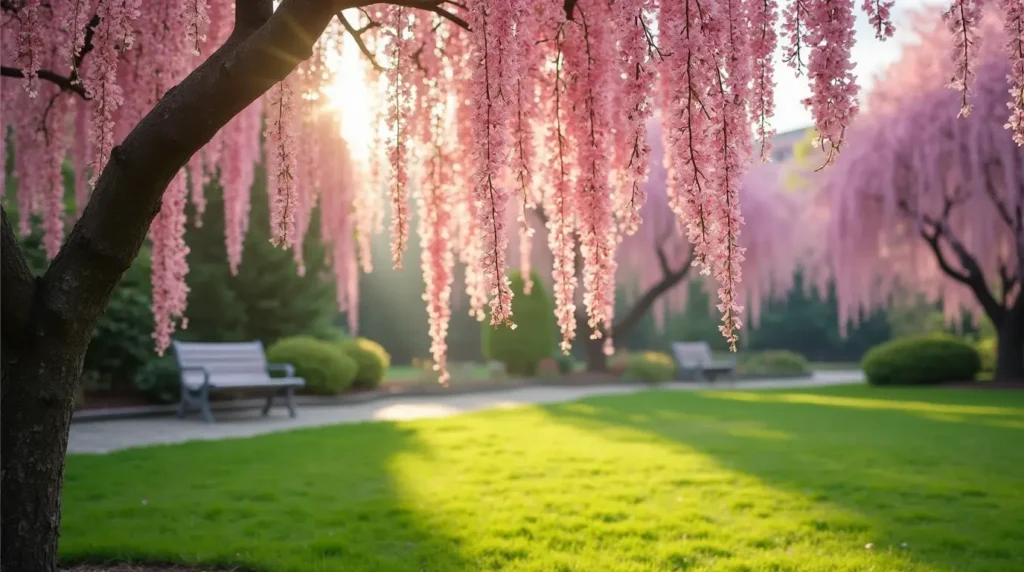
Planting Your Weeping Cherry Tree
The success of your weeping cherry tree’s growth begins with proper planting. This involves selecting the right time, preparing the soil adequately, and following a careful planting process.
Best Time to Plant
The ideal time to plant a weeping cherry tree is during its dormant season. This can be in late fall after the tree has dropped its leaves or in early spring before it begins to bud. Planting in fall allows the tree to establish its roots before winter, while spring planting gives it a full growing season to become established before its first winter.
Soil Preparation
Weeping cherry trees require rich, well-drained soil with a pH between 6.0 and 7.0. Before planting, it’s essential to test your soil pH and amend it if necessary. If your soil is heavy clay or drains poorly, mixing in compost or well-rotted organic matter can improve drainage and prevent root rot.
- Test your soil pH and adjust it to a slightly acidic to neutral range.
- Amend heavy clay or poorly draining soil with organic matter.
Planting Process Step-by-Step
To plant your weeping cherry tree, start by digging a hole that is twice as wide as the root ball but no deeper. Gently remove the tree from its container, loosen the outer roots, and place it in the hole. Backfill with your amended soil, tamping it down gently to remove air pockets. Create a water basin around the tree and water thoroughly.

Essential Watering Guidelines
The right watering technique can make all the difference in the thriving of your weeping cherry tree. Proper watering ensures the tree establishes a strong root system and maintains its health throughout its lifespan.

Watering Schedule for New Trees
Newly planted weeping cherry trees require consistent moisture during their first growing season. Water them deeply 2-3 times per week, ensuring the root zone is thoroughly moistened. As the tree establishes, gradually reduce watering frequency but increase the amount of water per session.
Established Tree Water Needs
Once established, weeping cherry trees typically need supplemental watering only during extended dry periods or drought conditions. The goal is to maintain consistently moist soil without waterlogging, as these trees are susceptible to root rot in soggy conditions.
Signs of Improper Watering
Check soil moisture by using the finger test; if it feels dry 2-3 inches below the surface, it’s time to water. Wilting or yellowing leaves can indicate either under-watering or over-watering. Brown, crispy leaf edges signal drought stress, while yellowing leaves that drop prematurely often indicate overwatering.
Fertilization and Soil Management
To ensure your weeping cherry tree thrives, it’s essential to understand its fertilization and soil needs. Weeping cherry trees benefit from regular fertilization to support healthy growth and abundant flowering.
Nutrient Requirements
Weeping cherry trees perform best in moderately rich soil. A balanced, slow-release fertilizer with an NPK ratio such as 10-10-10 provides the essential nutrients cherry trees need for overall health.
- Apply fertilizer in early spring just as new growth begins.
- For young trees, use approximately 1/10 pound of nitrogen per year of tree age, up to a maximum of 1 pound for mature trees.
Fertilizing Schedule
Feed your weeping cherry tree annually with a complete fertilizer in early spring. Always follow the label instructions carefully to prevent harming your plants.
Soil pH Maintenance
Keep the soil pH between 6.0 and 7.0 to ensure optimal nutrient absorption for cherry trees. Adjust the pH as necessary based on soil tests, and consider annual applications of compost to improve soil structure.

Pruning Techniques for Weeping Cherry Trees

Weeping cherry trees require careful pruning to maintain their graceful weeping form and overall health. Pruning is essential for removing dead, damaged, or diseased branches, which helps prevent the spread of disease and encourages healthy growth.
When to Prune
The best time to prune a weeping cherry tree is immediately after it finishes flowering, typically in late spring or early summer. Pruning at this time allows the tree to heal before winter and doesn’t interfere with the following year’s flower buds, which form in summer and fall.
Proper Pruning Methods
When pruning, use clean, sharp tools to make clean cuts just outside the branch collar to promote proper healing. It’s crucial to avoid removing more than 25% of the tree’s canopy in a single pruning session to prevent stress and excessive new growth.
Removing Rootstock Suckers
Since most weeping cherry trees are grafted, it’s essential to identify and promptly remove any suckers growing from the rootstock below the graft union. Rootstock suckers have different leaf shapes and growth habits than the weeping portion and can divert energy from the desirable weeping form if allowed to grow.
Seasonal Care Calendar
Understanding the seasonal needs of your weeping cherry tree is key to its longevity and aesthetic appeal. The care routine varies significantly across different seasons, ensuring the tree remains healthy and continues to bloom beautifully.
Spring Care Tasks
Fertilize your weeping cherry tree in the spring as it emerges from dormancy. Removing spent blossoms after the flowering display can help prevent energy diversion to seed production. Monitoring for early signs of pests and diseases is also crucial during this period.
Summer Maintenance
During summer, consistent watering is essential, especially during dry periods. The lush green foliage provides shade and showcases the tree’s graceful form. Minimal pruning is required, focusing on removing dead or damaged branches.
Fall Preparation
In fall, the weeping cherry’s foliage transitions to yellow and sometimes orange hues, although it’s not known for dramatic fall color. This season is ideal for planting new weeping cherry trees, allowing them to establish roots before winter.
Winter Protection
To prepare your weeping cherry for winter, ensure it receives adequate water until the ground freezes, and apply a fresh layer of mulch. Young trees may benefit from trunk wrapping in harsh winters or areas prone to animal damage.
Troubleshooting Common Problems
Maintaining the health of your weeping cherry tree involves understanding and addressing common problems like pest infestations and diseases. Weeping cherry trees are prone to attacks from various insects and diseases, which can significantly impact their beauty and health.
Pest Management
Common pests affecting weeping cherry trees include borers, aphids, scale insects, and tent caterpillars. Borer infestations, indicated by sap oozing from the trunk, can be particularly damaging. Regular inspection, especially of the undersides of leaves and branch crotches, helps in early detection and control.
Disease Prevention and Treatment
Weeping cherry trees are susceptible to diseases like powdery mildew, a fungal disease that appears as a white powdery coating on leaves. While it primarily affects the tree’s appearance, severe infections can weaken the tree. Preventive measures include improving air circulation through proper pruning and avoiding overhead watering that wets the leaves. Diseased vegetation should be cut off and disposed of properly.
Environmental Stress Symptoms
Environmental stresses such as drought can cause leaves to wilt, curl, or develop brown edges. Overwatering often results in yellowing leaves. Temperature extremes, particularly late spring frosts, can damage emerging blossoms and new growth, potentially reducing the flowering display. Understanding these symptoms can help in taking corrective measures.
Conclusion
The weeping cherry tree, with its cascading branches and vibrant blossoms, is a true gem in any landscape. With proper care and attention to its specific needs, your weeping cherry tree will reward you with spectacular flowering displays for many years to come.
Regular maintenance, as outlined in this care guide, will help prevent common problems and ensure your tree remains healthy and vigorous. The breathtaking display of blossoms each spring makes all the care efforts worthwhile, as few flowering trees can match the beauty of a weeping cherry in full bloom.
As your tree matures, its character will develop, with the weeping form becoming more pronounced and the spring display of flowers becoming more abundant. By following the comprehensive care practices outlined in this guide, you’ll ensure your weeping cherry tree remains a healthy, beautiful addition to your landscape for decades, symbolizing the renewal that comes with each spring.
FAQ
What is the ideal soil condition for a flowering Cherry Blossom?
The ideal soil for a flowering Cherry Blossom is well-drained, as it prevents root rot. The Prunus genus, to which Cherry Blossoms belong, generally thrives in a variety of soils but performs best in fertile, loamy soils with a balanced pH.
How often should I water my newly planted Cherry Blossom?
Newly planted Cherry Blossoms require consistent moisture, especially during their first year. Water regularly, keeping the soil moist without letting it become waterlogged. As the tree establishes, it becomes more drought-tolerant, but regular watering during dry spells is still beneficial.
What are the common pests and diseases affecting Cherry Blossoms?
Cherry Blossoms can be affected by pests like aphids and diseases such as powdery mildew, a fungal disease. Regular inspection and maintaining good garden hygiene can help prevent these issues. Using organic or chemical controls as needed can also mitigate problems.
How much sunlight does a Cherry Blossom need?
Cherry Blossoms prefer full sun to bloom profusely. They require at least 6 hours of direct sunlight per day. Planting in a location that receives ample sunlight will ensure the best flowering performance.
Can Cherry Blossoms grow in any climate?
While Cherry Blossoms are adaptable, they generally thrive in temperate climates with cool winters and warm springs. Extreme temperatures, either too hot or too cold, can affect their performance. They are hardy in USDA zones 5-8, depending on the specific variety.
How do I fertilize my Cherry Blossom?
Fertilizing Cherry Blossoms should be done annually, using a balanced fertilizer. The ideal time to fertilize is early spring, right as new growth starts. Avoid over-fertilizing, as this can lead to more foliage at the expense of blooms.

